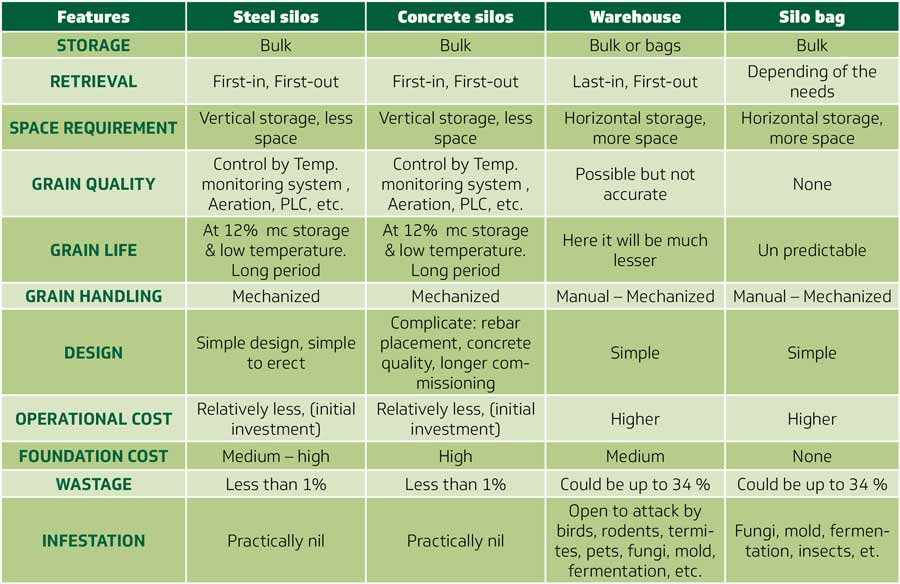
[caption id="attachment_6562" align="aligncenter" width="1014"] File Photo[/caption]
Rice is one of the most important human food crops in the world, directly feeding nearly half of world’s population. Adequately performed rice post-harvest handling operations contribute to prevent food losses and consequently to achieve food security. The key to correct rice storage is to keep the grain clean, dry, healthy and without mechanical damage. Therefore, proper management of technology is crucial.
FACTORS AFFECTING THE RICE STORAGE
Moisture content. Rice is usually harvested with a moisture content of ≈ 25%
Temperature. Growth of fungi and chemical changes such as oxidation are increased with temperature. Moreover, it is really important to consider the climate in the different regions of the world.
Storage period. The shorter the better. Cleaning the grain prior to storage will minimize the risk of spoilage and economic loss.
General condition of the rice and the amount of foreign materials. Broken seed during harvesting, surface and internal conditions, impurities in bulk paddy, etc.
POST-HARVEST HANDLING OF RICE AND ITS EFFECTS ON QUALITY
The processes involved in the post-harvest handling of rice are reception, cleaning, drying and storage. If all these processes are adequately performed, we will be able to maintain the highest quality.
RECEPTION PROCESS
Moisture content and heat are decisive factors in grain storage. They will condition the grain quality and, therefore, the final product quality.
In this initial step, we should consider:
Analyzing the rice upon arrival to the storage plant. Take samples for measuring the heat and moisture content and the percentage of foreign particles.
Insect control measures or mold activity. Currently there are high technological equipment able to do so without a high investment.
Aspiration system. It is highly recommendable to eliminate fines particles coming with paddy and allow a good ventilation during the storage period.
CLEANING PROCESS
Cleaning is the process of removing foreign particles from the bulk.
An integrated cleaning system adapted to the grain’s needs should be installed.
Equipment necessary for the cleaning process:
Magnet separator. It is appropriate to get metal out from grains. This device will avoid damage or failures in the following processes.
Drum sieve. It separates coarse impurities such as pieces of straw, paper, pieces of wood… This device will avoid damage or failures in the following processes.
Grain precleaner. It removes dust and light particles from grain.
Grain cleaner. It includes a screen for incoming gross material such as sticks, leaves, straw, etc.
Buffer silos. They are installed after the cleaning process, because usually, the drying capacity of the storage plant is lower than cleaning system capacity. This way, paddy will be stored in the buffer silos while waiting to be dried.
File Photo[/caption]
Rice is one of the most important human food crops in the world, directly feeding nearly half of world’s population. Adequately performed rice post-harvest handling operations contribute to prevent food losses and consequently to achieve food security. The key to correct rice storage is to keep the grain clean, dry, healthy and without mechanical damage. Therefore, proper management of technology is crucial.
FACTORS AFFECTING THE RICE STORAGE
Moisture content. Rice is usually harvested with a moisture content of ≈ 25%
Temperature. Growth of fungi and chemical changes such as oxidation are increased with temperature. Moreover, it is really important to consider the climate in the different regions of the world.
Storage period. The shorter the better. Cleaning the grain prior to storage will minimize the risk of spoilage and economic loss.
General condition of the rice and the amount of foreign materials. Broken seed during harvesting, surface and internal conditions, impurities in bulk paddy, etc.
POST-HARVEST HANDLING OF RICE AND ITS EFFECTS ON QUALITY
The processes involved in the post-harvest handling of rice are reception, cleaning, drying and storage. If all these processes are adequately performed, we will be able to maintain the highest quality.
RECEPTION PROCESS
Moisture content and heat are decisive factors in grain storage. They will condition the grain quality and, therefore, the final product quality.
In this initial step, we should consider:
Analyzing the rice upon arrival to the storage plant. Take samples for measuring the heat and moisture content and the percentage of foreign particles.
Insect control measures or mold activity. Currently there are high technological equipment able to do so without a high investment.
Aspiration system. It is highly recommendable to eliminate fines particles coming with paddy and allow a good ventilation during the storage period.
CLEANING PROCESS
Cleaning is the process of removing foreign particles from the bulk.
An integrated cleaning system adapted to the grain’s needs should be installed.
Equipment necessary for the cleaning process:
Magnet separator. It is appropriate to get metal out from grains. This device will avoid damage or failures in the following processes.
Drum sieve. It separates coarse impurities such as pieces of straw, paper, pieces of wood… This device will avoid damage or failures in the following processes.
Grain precleaner. It removes dust and light particles from grain.
Grain cleaner. It includes a screen for incoming gross material such as sticks, leaves, straw, etc.
Buffer silos. They are installed after the cleaning process, because usually, the drying capacity of the storage plant is lower than cleaning system capacity. This way, paddy will be stored in the buffer silos while waiting to be dried.
Features of Main Storage Processes
 Galvanized sheet metal silos are nowadays the best alternative for grain storage thanks to their versatility, easy assembly, hygienic handling and low storage cost.
At this point paddy is already clean and dry and we just need to manage the storage process properly to keep the maximum quality.
Recommendations:
Galvanized sheet metal silos are nowadays the best alternative for grain storage thanks to their versatility, easy assembly, hygienic handling and low storage cost.
At this point paddy is already clean and dry and we just need to manage the storage process properly to keep the maximum quality.
Recommendations:
Comment Now